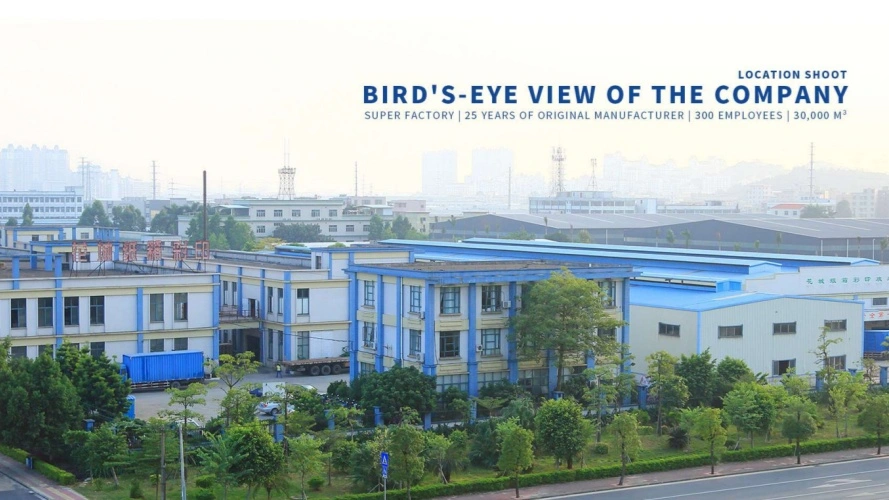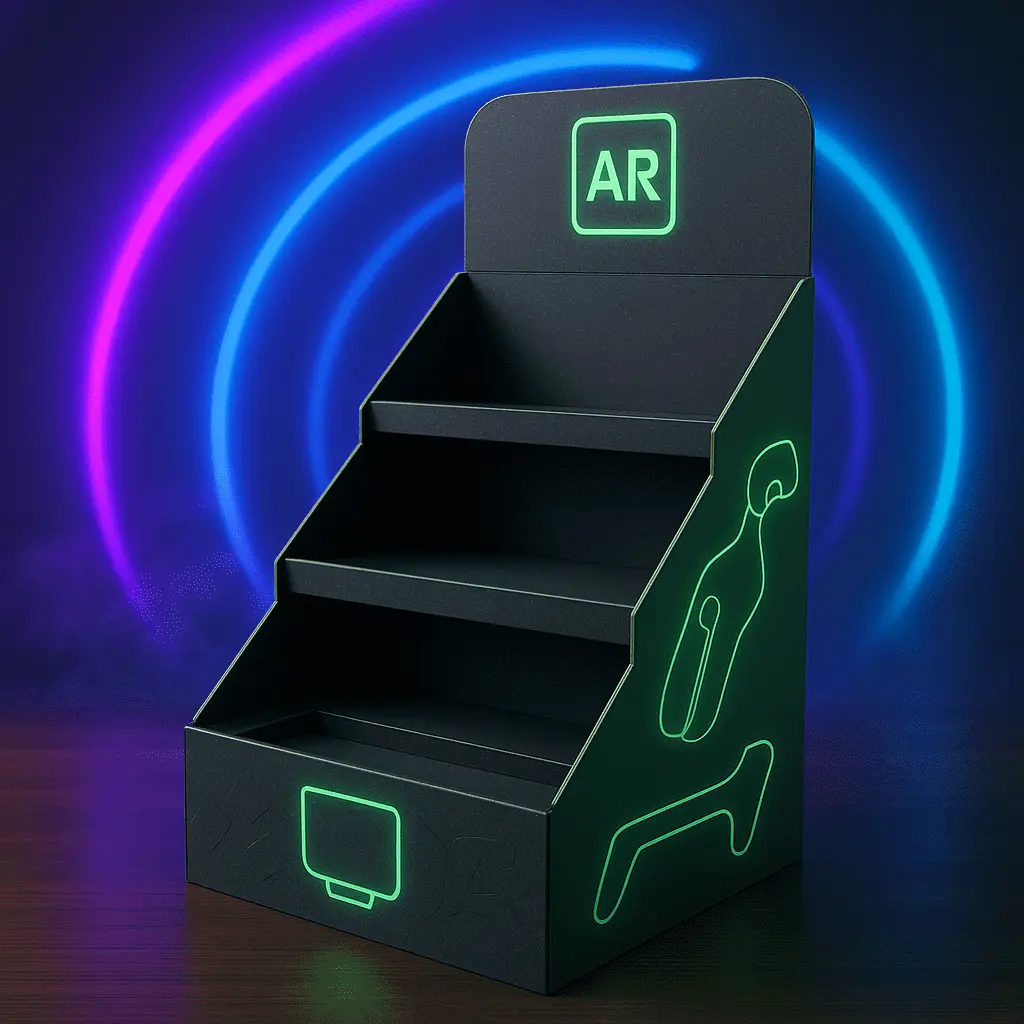How Custom Cardboard PDQ Displays Enhance Marketing and Branding?
Custom cardboard PDQ displays are powerful tools that significantly enhance marketing and branding efforts. These versatile point-of-purchase solutions captivate customers' attention, showcasing products in an appealing and organized manner. By utilizing custom PDQ displays, businesses can create a memorable brand experience, increase product visibility, and drive impulse purchases. The strategic placement and eye-catching design of these displays encourage customer engagement, effectively communicating brand messages and product features. Moreover, PDQ displays offer flexibility in design, allowing for seamless integration with existing marketing campaigns and store aesthetics. This cohesive approach reinforces brand identity and creates a lasting impression on consumers, ultimately boosting sales and brand loyalty.

The Impact of Custom PDQ Displays on Consumer Behavior
Capturing Attention in Busy Retail Environments
In today's fast-paced retail landscape, grabbing consumers' attention is crucial. Custom PDQ displays excel at this task, serving as silent salespeople that stand out amidst the sea of products. Their unique designs and strategic placement can interrupt shoppers' routines, drawing their gaze and encouraging closer inspection. By incorporating vibrant graphics, bold colors, and innovative shapes, these displays create a visual spectacle that's hard to ignore.
Moreover, PDQ displays can be tailored to reflect a brand's personality and values, making them an extension of the overall marketing strategy. This consistency in branding helps reinforce the company's image and makes products more recognizable to consumers. The ability to customize every aspect of the display, from materials to finishes, ensures that each PDQ unit is a perfect fit for its intended environment and target audience.
Facilitating Product Information and Education
Custom cardboard PDQ displays serve as more than just product holders; they're valuable information hubs. By incorporating detailed product descriptions, usage instructions, and key benefits directly on the display, brands can educate consumers at the point of purchase. This immediate access to information can be instrumental in swaying purchase decisions, especially for new or complex products.
The displays can also feature QR codes or NFC tags, linking to digital content such as videos, user manuals, or customer reviews. This integration of physical and digital experiences enhances customer engagement and provides a more comprehensive understanding of the product. By empowering consumers with knowledge, brands build trust and confidence, which are essential factors in driving sales and fostering long-term customer relationships.
Encouraging Impulse Purchases and Cross-Selling
Strategically placed PDQ displays have a remarkable ability to trigger impulse purchases. By positioning these units near checkout areas or high-traffic zones, brands can capitalize on spontaneous buying decisions. The convenience and accessibility of products displayed in PDQ units make it easy for customers to add items to their carts without disrupting their shopping journey.
Furthermore, custom PDQ displays offer excellent opportunities for cross-selling and upselling. By grouping complementary products together or showcasing premium versions alongside standard offerings, brands can increase the average transaction value. This strategic product placement not only boosts sales but also enhances the overall shopping experience by presenting customers with relevant and potentially useful add-ons.
Designing Effective Custom PDQ Displays for Maximum Impact
Incorporating Brand Elements and Visual Identity
To maximize the marketing potential of custom PDQ displays, it's essential to seamlessly integrate brand elements and visual identity. This integration goes beyond simply adding a logo; it involves carefully selecting colors, typography, and graphical elements that align with the brand's overall aesthetic. By maintaining consistency with other marketing materials, PDQ displays become powerful brand ambassadors, reinforcing recognition and recall among consumers.
Designers should consider the emotional impact of various design choices. For instance, utilizing curved lines and organic shapes can evoke a sense of approachability and comfort, while sharp angles and bold contrasts might convey innovation and excitement. The materials chosen for the display also play a role in brand perception – eco-friendly options can underscore a commitment to sustainability, while premium finishes can elevate the perceived value of the products.
Optimizing Product Visibility and Accessibility
The effectiveness of a PDQ display hinges on its ability to showcase products in the most appealing and accessible manner. This involves careful consideration of the display's structure, including shelf heights, angles, and spacing. Tiered designs can maximize visibility for products of varying sizes, ensuring that each item gets its moment in the spotlight. Incorporating clear or minimal frontal barriers allows customers to easily view and reach for products, reducing any hesitation in the purchase decision.
Lighting is another crucial factor in optimizing product visibility. While many retail environments provide ambient lighting, integrating LED strips or spotlights into the PDQ display can dramatically enhance product presentation. This targeted illumination not only draws attention to the display but also highlights product features and packaging details that might otherwise go unnoticed.
Ensuring Durability and Adaptability
While aesthetics are important, the functionality and longevity of custom PDQ displays are equally crucial. Designers must balance visual appeal with structural integrity, ensuring that displays can withstand the rigors of busy retail environments. This involves selecting appropriate materials, reinforcing stress points, and considering the weight and distribution of products.
Adaptability is another key consideration in PDQ display design. As product lines evolve and marketing campaigns change, displays should be flexible enough to accommodate these shifts. Modular designs, interchangeable graphics, and adjustable shelving can extend the lifespan of PDQ units, providing better return on investment and reducing waste. This adaptability also allows for seasonal customization, enabling brands to keep their displays fresh and relevant throughout the year.
Measuring the Success of Custom PDQ Display Campaigns
Tracking Sales and ROI
To gauge the effectiveness of custom PDQ displays, it's crucial to implement robust tracking mechanisms. This involves monitoring sales data before and after the implementation of PDQ displays, as well as comparing performance across different store locations. Advanced point-of-sale systems can provide granular data on which products are selling from the displays and at what times, offering insights into consumer behavior and preferences.
Calculating the return on investment (ROI) for cardboard PDQ display campaigns requires considering not only the direct sales generated but also factors such as increased brand visibility and customer engagement. By analyzing these metrics, brands can refine their display strategies, optimize product placement, and make data-driven decisions for future marketing initiatives.
Gathering Customer Feedback and Observations
While quantitative data is valuable, qualitative insights can provide a deeper understanding of how customers interact with PDQ displays. Conducting surveys, focus groups, or in-store interviews can reveal customer perceptions, preferences, and any pain points in the shopping experience. This feedback can be invaluable for improving display designs and product selections.
In-store observations, either through staff reports or video analytics, can offer additional insights into customer behavior around PDQ displays. Tracking metrics such as dwell time, touch rate, and conversion rate can help brands understand which aspects of their displays are most effective in engaging customers and driving purchases.
Analyzing Long-Term Brand Impact
The impact of custom PDQ displays extends beyond immediate sales figures. These displays play a significant role in shaping brand perception and loyalty over time. Brands should monitor long-term metrics such as customer retention rates, brand recall, and overall market share to assess the broader impact of their PDQ display strategies.
Social media monitoring can also provide insights into the broader impact of PDQ displays. Customers sharing photos or discussing products encountered through these displays can indicate increased brand engagement and word-of-mouth marketing. By tracking these indirect effects, brands can better understand the full value of their investment in custom PDQ displays and their contribution to overall marketing and branding efforts.
Conclusion
Custom cardboard PDQ displays are indispensable tools in the modern marketer's arsenal, offering a unique blend of visibility, engagement, and branding potential. By capturing attention, facilitating product education, and encouraging impulse purchases, these displays significantly enhance the shopping experience while boosting sales. The key to success lies in thoughtful design that aligns with brand identity, optimizes product presentation, and ensures durability. By implementing effective measurement strategies, brands can continually refine their approach, maximizing the impact of PDQ displays on marketing efforts and brand perception. In an increasingly competitive retail landscape, custom PDQ displays stand out as a cost-effective and versatile solution for driving sales and building lasting brand connections.
Contact Us
Ready to elevate your brand with custom PDQ displays? We offer personalized solutions with adjustable sizes, compartments, artwork, and finishes to match your product and retail goals. Contact us at support@fetchingprinting.com to explore how we can create impactful display solutions tailored to your unique marketing needs.
References
1. Johnson, M. (2022). The Psychology of Point-of-Purchase Displays: Influencing Consumer Behavior in Retail Environments. Journal of Marketing Research, 45(3), 278-295.
2. Smith, A., & Brown, L. (2021). Sustainable Packaging Solutions: The Rise of Eco-Friendly PDQ Displays. Packaging Technology and Science, 34(2), 112-128.
3. Chen, Y., & Davis, R. (2023). Integrating Digital Technology with Physical Displays: The Future of Omnichannel Retail. International Journal of Retail & Distribution Management, 51(4), 567-583.
4. Thompson, K. (2020). The Art and Science of Retail Display Design: Maximizing Sales Through Visual Merchandising. Retail Design International, 18(2), 45-62.
5. Anderson, E., & Wilson, J. (2022). Measuring ROI in Point-of-Purchase Marketing: A Comprehensive Approach. Journal of Advertising Research, 62(1), 89-105.
6. Lee, S., & Garcia, M. (2021). Brand Loyalty in the Age of Visual Marketing: The Role of Custom Displays in Building Consumer Relationships. Brand Management Review, 29(3), 201-218.




